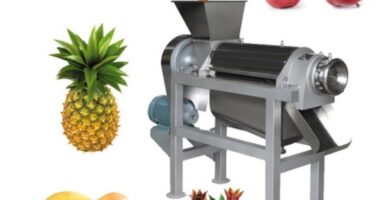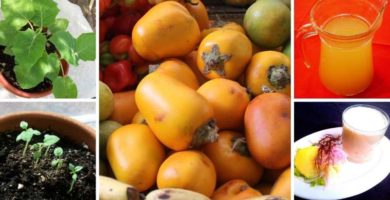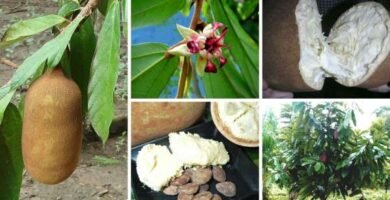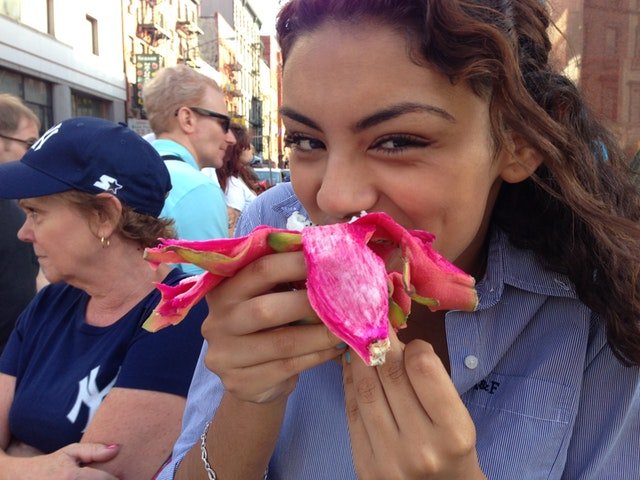
Native Amazonian fruits are known and unknown (or little known), some fruit trees are cultivated while others remain wild.
Most of the Amazonian fruits belong to the second group.
As we go deeper into the jungle , the fruits are less known and more wild.
✅ Wild Amazon Fruits.
( Not found in the markets… )
The fruit trees originating in the Amazon are very little cultivated, because they do not have a solvent demand, and there is no demand because they are almost unknown. Therefore, they are not offered. What completes the vicious circle of ignorance of the flora of the Amazon and its benefits.
January 10, 2020
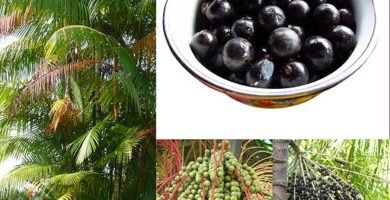
Acai, asai, asaí or açaí: a fruit that cures EVERYTHING!
November 25, 2019
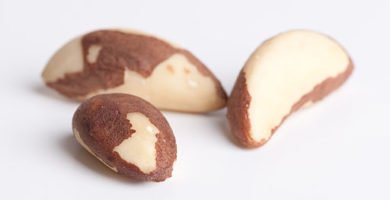
Brazil Nut (Bertholletia excelsa)
October 20, 2019
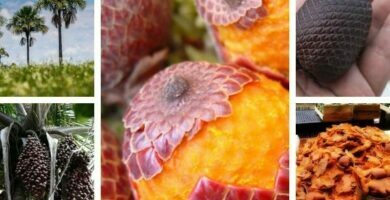
Mauritia Flexuosa: “The tree of life” (Buriti or Moriche palm)
In almost no large market in the large cities of the countries that are part of the basin can you find Amazonian fruits.
Except, perhaps, in Brazil, where there are mega-cities in the region, such as Manaus, Belem do Pará and others (see: Amazonas-Brazil ). And even in them, as the writers of Trajectories in travel recount, who imagined the enormous municipal market of Manaus full of fruits, fish and strange products, and “… we found none of that.”
It is a great biodiversity that is not used to increase human well-being, and remains within the farms and family gardens of the native indigenous communities or in the depths of the jungle, without us knowing and enjoying it.
✅ Cultivated Amazon Fruits (Famous)
Very few Amazonian fruits are grown and marketed. Apart from those that we know a lot about, such as pineapple or pineapple, soursop, papaya, guava, avocado or avocado, or some species of passionflowers such as passion fruit.
January 27, 2020
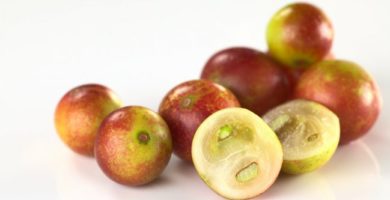
Camu-camu: benefits, Super-Vitamin C and where to buy
January 25, 2020

Cocoa (Theobroma cacao)
December 9, 2019
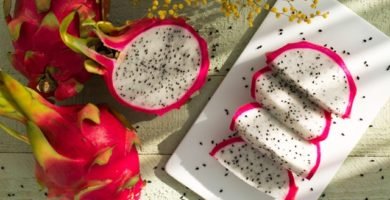
Dragon Fruit Benefits – The healthy power of Pitayas
May 13, 2024
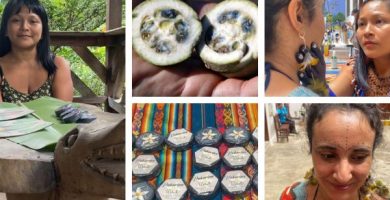
12 reasons why using wituk (Genipa americana)
February 9, 2024

The collagen industry and deforestation in the Amazon: discover sustainable alternatives
August 12, 2022
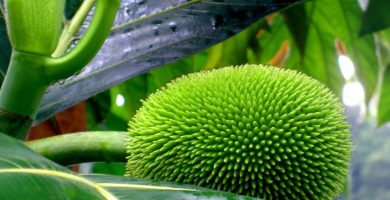
Breadfruit Tree (Artocarpus altilis)
October 29, 2020
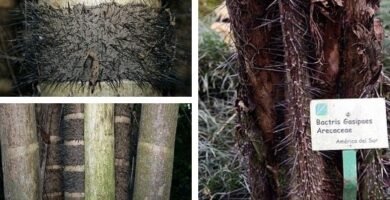
Chonta or chontaduro (Bactris gasipaes)
October 2, 2020
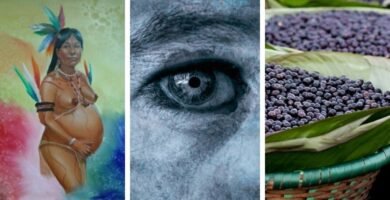
Acai, the tragic legend of the palm tree that saved an Amazonian tribe
September 18, 2020
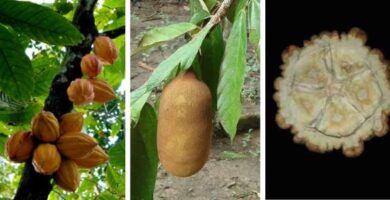
Theobroma (genus): cocoa, grandiflorum, bicolor (+ 22 species)
September 2, 2020
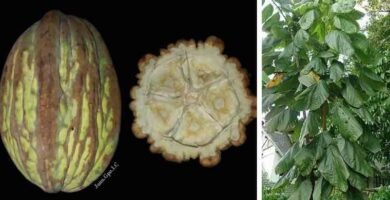
Mocambo (Theobroma bicolor) The Jaguar Tree
June 21, 2020

Sacha Inchi (Plukenetia volubilis L.) The Inca Peanut – Benefits
June 18, 2020

Pitomba, a fruit with surprising medicinal properties!
This makes Amazonian restaurant cuisine a kind of cult cuisine, which is only practiced by chefs from and within the region.
Difficulty for Amazon restaurants
Outside the countries of the basin, and even in these only in some areas, authentic Amazonian restaurants are practically unviable.
The main reason for this difficulty is that fresh, quality ingredients are not available to prepare an honest and representative meal, due to the lack of efficient distribution networks.
There are many fruits, most of them wild, that must be collected.
But the agri-food value chain is missing, which begins with a link made up of indigenous collectors who receive fair remuneration for their work, what the FAO calls “decent work”
Another cause of the difficulty of obtaining Amazonian ingredients is the lack of an organization for the production of organic products, by indigenous cooperatives that distribute or process them, as organic products that are, without excessive intermediaries, even the centers of processing or conditioning to be taken to national urban markets or for export in fair trade systems.
And there is also a lack of strong support from universities that, in academic cooperation programs, study the agronomic characteristics and the nutritional, medicinal and agro-industrial properties of Amazonian plants , and in particular of their fruits.
✅ 10 promising Amazon fruits
Just as an illustration, we will present, in alphabetical order, only from A to C (mainly using the common names used in the Peruvian Amazon), a dozen Amazonian fruits of great interest as food, medicine and as an ingredient for cooking. and confectionery, which can be the subject of national and international trade.
This selection, apparently so limited, only ten fruits in the first three letters of the alphabet, we make it to show the enormous wealth of Amazonian fruits, mostly wild, that could be better used in enhancing the value of Amazonian biodiversity, with the active participation of native indigenous communities.
1. Apple
The soursop, anonilla, wild apple or Amazon sugar apple ( Rollinia mucosa ) is a tree up to 10 meters high, whose fruit is round and weighs between 300 and 1,300 grams.
Its shell is green, which turns yellow when ripe. Inside, it has 70% pulp, white, juicy, sweet and gelatinous in consistency (hence its scientific name).
It is generally consumed as a fresh fruit or used to make juices, soft drinks, ice cream and pastries.
The fruit is watery, 67 to 85% water, and rich in carbohydrates.
This species has other relatives, such as the soursop ( Annona excelens ) and the kidney ( Annona squamosa), with different organoleptic properties.
2. Araza
The arazá ( Eugenia stipitata ) or “Brazilian guava” is a small tree, up to 3 m high, abundant in the lowland forest.
February 13, 2020

▷ Araza (Eugenia stipitata): the power of the Amazonian guava
Its fruit is a rounded berry, with green skin when immature and yellow when ripe, which has from 1 to 20 seeds in the fruit.
Its pulp is abundant, and represents about 70% of the weight of the fruit. Contains between 90 and 94% water, low in calories.
It is used to prepare juices, ice creams, jams, wines, cocktails and confectionery.
Its consumption should be done with caution, because it should be used only when ripe, since green is very acidic and has very little aroma.
Another is that its pulp is not very resistant to heat, and when cooked for more than five minutes it loses its characteristic flavor.
3. Borojo
The borojó ( Borojoa sorbilis ) is a small tree, up to 6 m tall, probably native to the southwestern part of the Amazon River.
March 3, 2020
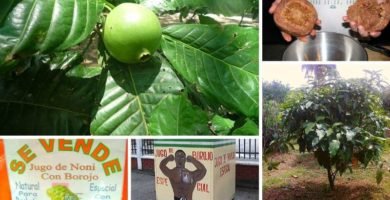
Borojo fruit – The tree of the hanging heads
The fruit is a round, fleshy berry with brown pulp and numerous seeds.
It is not a climacteric fruit, since it does not ripen if it is harvested green, which restricts its commercialization.
The pulp is pasty, green in color and bittersweet.
It is used in the preparation of juices, ice creams, jams, compotes, sweets and wine.
The pulp is rich in carbohydrates, phosphorus and calcium.
Its consumption is popular in Colombia (Caali, el Cocó and Bogotá) and in Brazil (Belem do Pará).
It is very similar in appearance to the fruit of the huito ( Genipa americana ).
4. Caimitillo
Caimitillo ( Pouteria speciosa ) is a tall tree, up to 25 m high, of the Sapotaceae family, abundant in the lowland forest, particularly in the Peruvian and Brazilian Amazon. The fruit, ovoid or ellipsoid, has a dense and gelatinous pulp, yellowish white in color, with a sweet flavor and an intense aroma. It is generally consumed as fresh fruit. Not to be confused with star apple ( Pouteria cianito).
5. Star apple
The caimito or caimo ( Pouteria caimito ), also called abiu in Brazil, is a tree that exceeds 15 m in height, about 60 cm DBH. Its fruit is a globose, ovoid berry, 4 to 10 cm long, with one to four shiny black seeds inside.
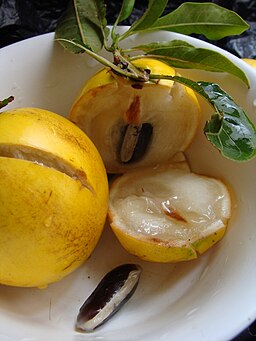
The skin is smooth, yellow or yellowish green when ripe.
The pulp is gelatinous, translucent or slightly whitish, with a very sweet taste.
It is consumed as a fresh fruit, although the latex of the skin sticks to the lips, causing discomfort when consumed.
In some parts they use it as an analgesic and antibacterial.
6. Camo Camo
The camu camu, cacari or arazá de agua ( Myrciaria dubia ), a fruit of great interest due to its richness in vitamin C, having an average of 2,000 mg per 100 g of fresh pulp, but only when the fruit is green, because its vitamin content C is greatly reduced as it matures.
January 27, 2020

Camu-camu: benefits, Super-Vitamin C and where to buy
It is a bush up to 3 m high, highly branched, abundant in the Peruvian Amazon.
The fruit is a soft, spherical berry, red to violet when ripe, similar to the ripe cherry of the coffee tree.
The pulp is fleshy, acidic, even more acidic when green, and pink in color, which intensifies the color as it matures.
It grows in flooded areas, near rivers, so it is a usual food for frugivorous fish, such as the gamitana ( Colossama macrocarpum ).
It is a climacteric fruit, and pintón is harvested manually, from canoes in the pipes or in flooded areas.
It is used to make soft drinks, ice cream, vinegar.
To make jam, its pulp is mixed with that of other fruits such as pineapple.
The fruit is widely consumed in the lower Amazon, such as Iquitos , Pucallpa.
Specialists consider it the fruit with the greatest agro-industrial potential in the Amazon, and much research has been directed towards it since the 1990s.
However, it is a wild species, which has been threatened by overexploitation, without its commercial cultivation being motivated.
7. Brazil Nut
The Brazil nut, better known as Brazil nut, jubia or juvia, ( Bertholletia excelsa) is another of the most promising fruits of the Amazon.
November 25, 2019

Brazil Nut (Bertholletia excelsa)
It is a wild, very tall tree, up to 60 m tall, widely distributed throughout the Amazon basin .
The Brazil nut, considered a dry fruit, is a spherical or slightly flattened capsule containing a milky-white almond, covered by a brown epidermis.
The fruits fall to the ground when ripe, from a height that exceeds 40 meters.
Its collection can be a very important activity for the native indigenous communities , who can market this fruit in external markets, arguing two things: one, that it is a purely organic product, and the other, that it is a harvested product, not extractive, that helps preserve environmental sustainability in the region.
It is a fruit with a woody and very hard bark, which is locally split with blows from a machete or with a press, sometimes causing damage to its appearance.
The almond is highly appreciated for its nutritional values.
It is consumed raw or as an ingredient in the preparation of ice cream, sweets, cookies and bread.
The milk, extracted by crushing its almond, is used in the preparation of some typical regional dishes, especially in Manaus.
The specialized literature reports that its almond is rich in fat and protein, as it contains the eight essential amino acids.
8. Charihuelo
The charihuelo, small bacurí, kamururo ( Garcinia macrophylla ) is a tree up to 25 m tall.
Its dark brown bark releases a dense yellowish resin.
The wood of its trunk is valuable for carpentry and for making floors.
Its fruit is an elongated berry of a little less than 10 cm, yellowish green, with a white pulp with an acid taste, and bittersweet when it ripens well, which is used to prepare soft drinks, ice cream and jam.
9. Cocona
The cocona, tupiro, túpiro ( Solanum sessiliflorum ) is a plant native to the eastern slopes of the Andes, but widely distributed in all the countries of the Amazon basin.
From the nightshade family, it looks a bit like a tomato on the inside.
It reaches up to 2 m in height.
Its fruit is ovoid or spherical, with smooth skin, yellow in color, presenting a soft and fine pubescence, or reddish in color.
The pulp is yellow and watery, with a slightly acid taste, and with numerous seeds like those of a tomato.
The pulp is used in the preparation of juices, compotes, jams and jellies. It is also consumed as an ingredient in salads or pickles or accompanying charapita chili in cocona chili, a very popular hot sauce in Iquitos.
Drinks are also prepared that mix powerful Amazonian fruits like this one that mixes coconut, cocona and aguaje.
10. Cupuaçu
The copoassú, cupuasú or white cocoa ( Theobroma grandiflorum ) is a tree up to 18 m tall, native to the Amazonian humid tropical forest.
Its fruit is an ellipsoidal or oblong drupe-berry, 12 to 25 cm long and weighing an average of 1.5 kg. The fruit contains 20 to 25 seeds wrapped in a white, yellowish pulp with an acidic or sweet taste.
The fruits of wild trees when ripe fall and are collected from the ground.
The pulp is highly perishable, and must be used within five days of harvesting.
It is used to make soft drinks, nectars, ice creams, jams, jellies, compotes, sweets, yogurt and liquor.
With the roasted and ground seed, a white powder called cupulate is made, whose organoleptic and nutritional characteristics are similar to those of chocolate.
And there is more, many more Amazonian fruits…
Apart from these ten selected fruits, there are many others such as:
- The guaba, inga, liana or rabo mico ( Inga edulis ), whose fruit is an elongated pod with seeds covered with a white, soft and sweet pulp.
- The huito ( Genipa americana ), a tall tree whose fruit is a spherical berry, with a whitish pulp and a bittersweet taste.
- The indano, nanci, yoco, maricas ( Byrsonima crassifolia ), a shrub whose fruit is a small globose drupe, with soft, bittersweet and oily pulp.
- The Lucuma , egg fruit or caimo ( Pouteria macrophylla ), whose fruit is a rounded berry, with yellow pulp, sweet flavor and intense aroma.
- The metohuayo, cacay, tacay, palo de nuez ( Caryodendrum orinocensi ), a tall tree, whose fruit is a capsule containing an almond, with a flavor similar to peanuts, which is eaten raw, toasted, fried or boiled, with salt.
- The pitanga or Surinam cherry ( Eugenia uniflora ), a small tree, whose fruit is a berry, with a juicy, bittersweet, aromatic pulp.
- The pitomba ( Talisia esculenta ) , which produces a berry, with its seeds wrapped in a white aril that is consumed when the fruit ripens.
- The sachamango or sacha mangua ( Grias neuberthii, G. marañonensis ), a tall tree, whose fruit has a white pulp, rich in vitamin A, which is consumed fresh, roasted or boiled.
And many other Amazonian fruits, with which, for the most part, juices, compotes, jams, ice creams, sweets, etc. can be prepared, which can be the basis of undertakings that value the great diversity of our Amazonian forest.

What is an “exotic” fruit?
We would like to make a brief clarification regarding the term “exotic” with which some users search for information on the Internet, carrying out searches such as: “exotic fruits of the Amazon”.
The term exotic according to the RAE refers to:
1. adj. Foreigner or coming from a distant country or place and perceived as very different from their own.
Royal Spanish Academy / https://dle.rae.es
Therefore, it will be correct to say “exotic fruits from the Amazon” if we are in Europe, Asia, Africa, Oceania or any country in the Americas that does not share Amazonian territory.
But if an inhabitant or citizen of Bolivia , Brazil , Colombia , Ecuador , Peru or Venezuela uses the epithet “exotic” to refer to something that is common and native to these countries, they will be committing a terminological error.

Dr. Rafael Cartay is a Venezuelan economist, historian, and writer best known for his extensive work in gastronomy, and has received the National Nutrition Award, Gourmand World Cookbook Award, Best Kitchen Dictionary, and The Great Gold Fork. He began his research on the Amazon in 2014 and lived in Iquitos during 2015, where he wrote The Peruvian Amazon Table (2016), the Dictionary of Food and Cuisine of the Amazon Basin (2020), and the online portal delAmazonas.com, of which he is co-founder and main writer. Books by Rafael Cartay can be found on Amazon.com
This post is also available in:
![]() Español (Spanish)
Español (Spanish)



